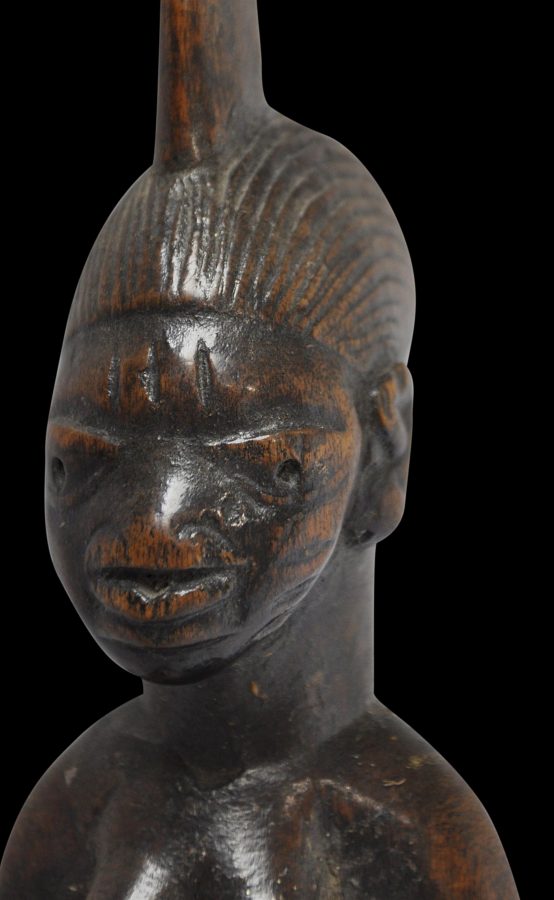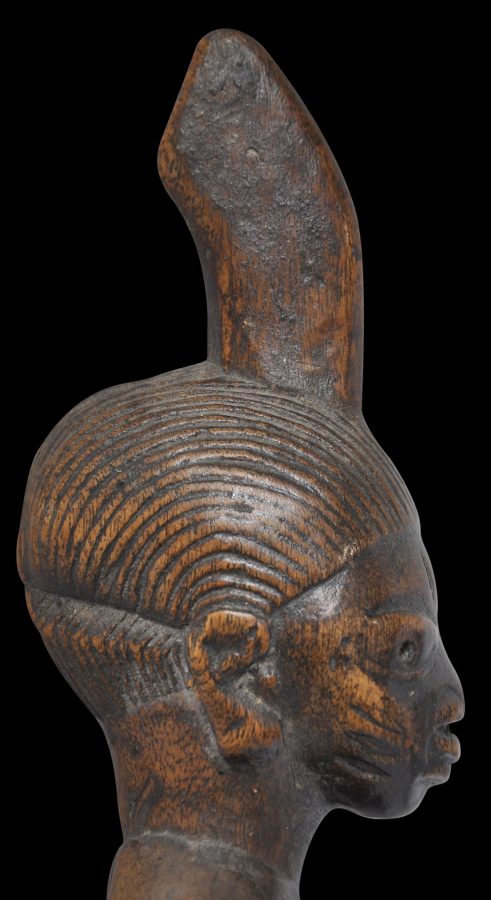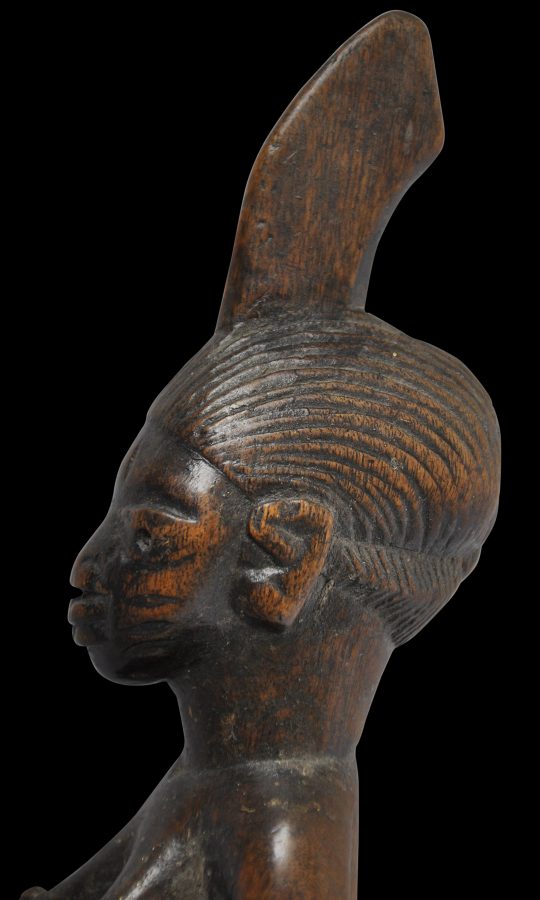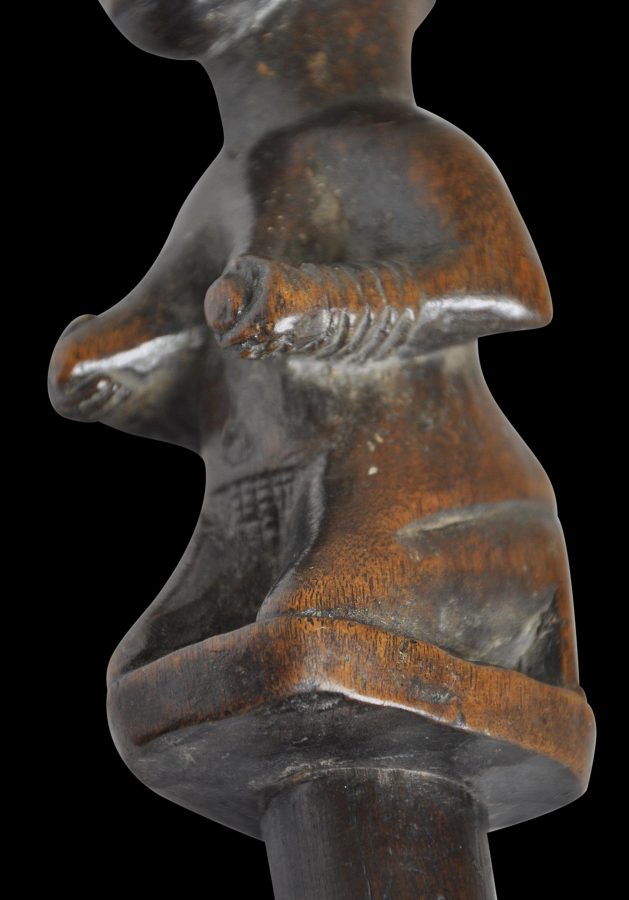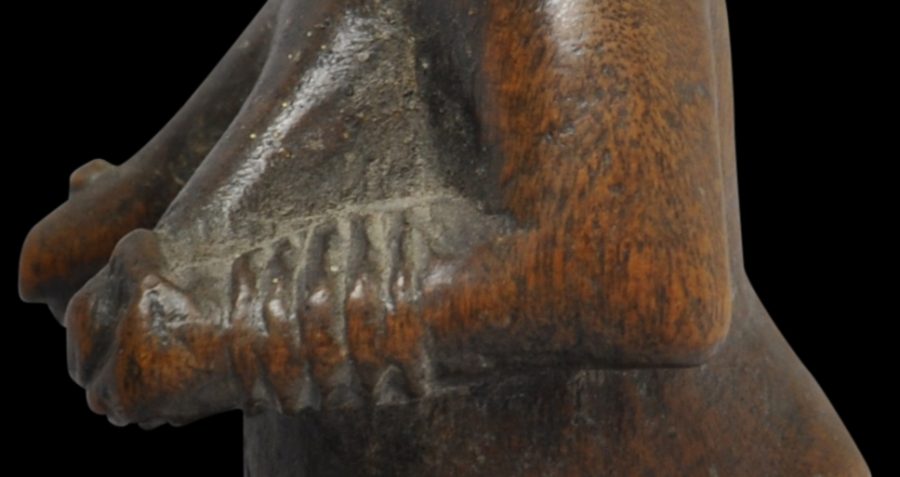Enquiry about object: 3107
Yoruba Eshu Dance Wand
Yoruba People, Egba Tribe, Abeokuta, Nigeria late 19th century
height: approximately 25cm, width: approximately 6cm
Provenance
acquired from the estate of Dr Peter Sharratt (d. 2014). Sharratt was a linguist and lecturer in the School of Literatures, Languages and Cultures at the University of Edinburgh who published on Renaissance French sculpture. In his private life, he was an avid collector of tribal art, building up his collection over fifty years. During that time, he bought from UK dealers, collectors and auction houses.
This Eshu dance wand is small but very well carved. It has superb wear and a rich, deep patina from ritual use. Its handgrip is so small that most probably it was made to be used by a young girl. The figure is a female, and she is naked. She kneels in a suppliant position, symbolic of generosity and devotion. Her devotion is further emphasised by her only body ornament: multiple wristbands. Her breasts are mango-shaped, and are held forward by both hands as if offering breast milk. Her nipples are almost rubbed away from ritual handling but are still vaguely recognisable. She has a big incised belly button. Her pubic area is incised with cross-hedge patterns in a triangular shape.
In terms of carving, the attention to details of this piece is exceptional. The fingers are finely carved. The toes have also been carved with much care. The buttocks are perky, and yet carved to suggest the pressure of her heels on her buttocks. Her eyes are almond-shaped. Her hollow irises are watchful. She has a flared nose and wide, full lips. The coiffure is simple yet elegant: the hair is pulled back and incised with clear, fine lines. Three vertical scarifications (pélé) are incised on her forehead, and three horizontal scarifications (àbàjà) are incised on each cheek.
According to Chemeche (2013, p. 26), Eshu is a trickster who is able to be good and bad, trustful and mischievous, and can deliver prosperity or cause misery. He is the protector of travellers. Most importantly, he is the mediator between the realm of spiritual and mortal worlds. Therefore, he is the guardian of all rituals. He supervises all the sacrifices to the gods. His long phallic coiffure is unique. It symbolises a power that is both creative and destructive. This power allows him to bless those who perform their rituals properly and correctly with good fortune, and to bring misery to those who do not perform their rituals properly. Eshu is therefore often represented on the shrine alongside with other deities. Eshu is especially closely linked to Shango rituals.
Dance wands were made to be carried by young Yoruba devotees on important ritual occasions. It is especially closely linked to the Shango annual festival. Eshu dance wands are similar in iconography to Shango dance wands, apart from its unique and immediately recognisable phallic coiffure. Female figures on Eshu dance wands usually are carved as young girls and yet also as mothers with a baby clasped to their backs.
Overall, this is a fine piece with excellent patina. It has come from an old Scottish collection.
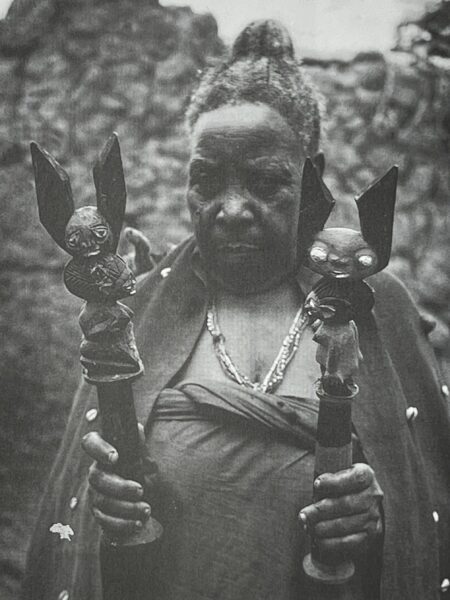
Above: A Shango priestess carrying two ritual staffs, Oyo, Nigeria. Photograph: Robert Farris Thompson, 1964.
References
Abiodun, R., H. J. Drewal & J. Pemberton III, Yoruba: Art and Aesthetics, The Center for African Art and the Rietberg Museum Zurich, 1991.
Bacquart, J. B., The Tribal Arts of Africa, Thames & Hudson, 1998.
Chemeche, G., Eshu: The Divine Trickster, Antique Collectors’ Club, 2013.
Fagg, W., J. Pemberton III & B. Holcombe, Yoruba: Sculpture of West Africa, Collins, 1982.
Polo, F., Encyclopedia of the Ibeji, Ibeji Art, 2008.
Robbins, W. M. and Nooter, N. I., African Art in American Collections, Smithsonian Institution, 1989.
Walker, R. A., Olowe of Ise: A Yoruba Sculptor to Kings, National Museum of African Art, 1998.







